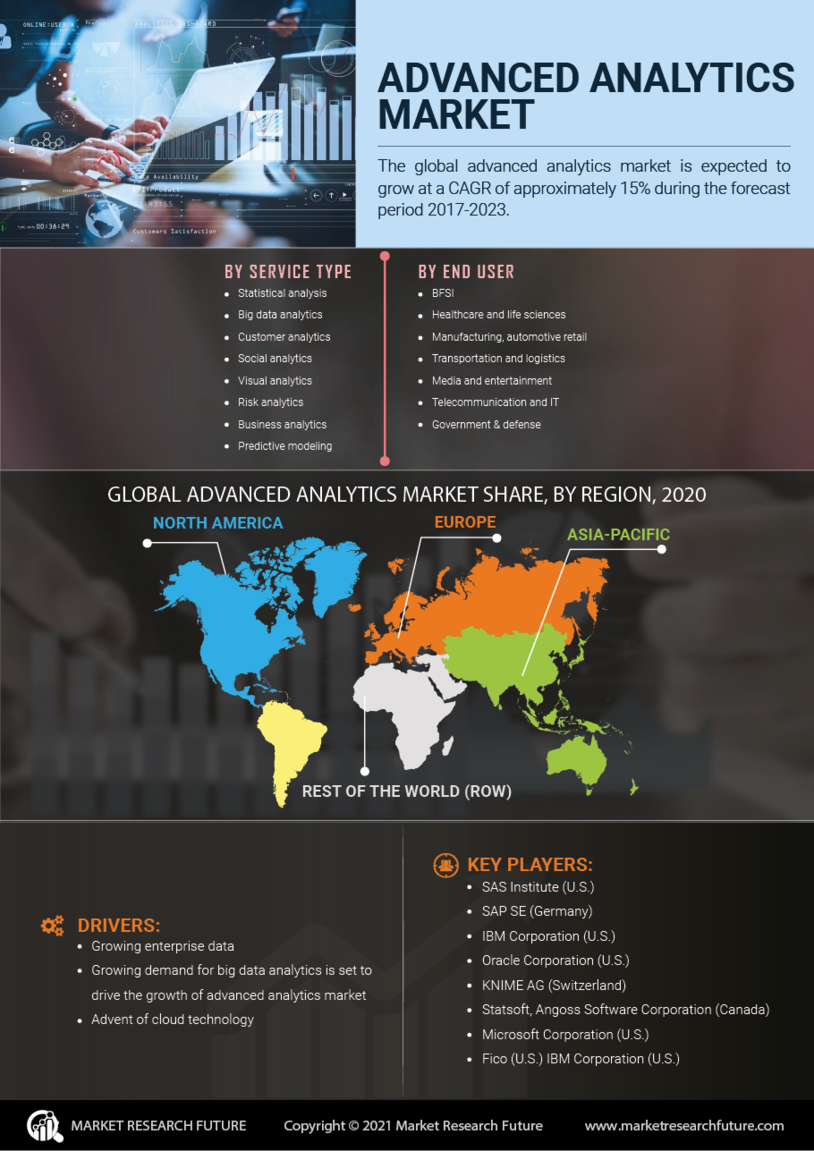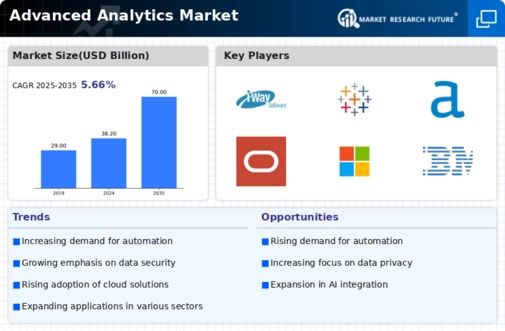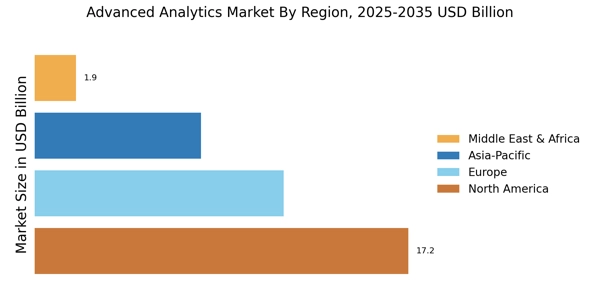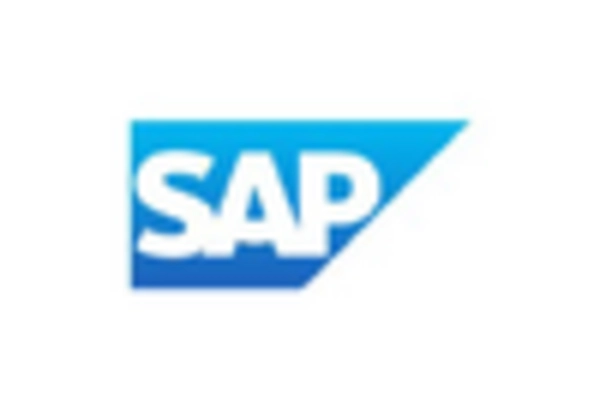Emergence of Big Data Technologies
The proliferation of big data technologies is significantly influencing the Advanced Analytics Market. With the exponential growth of data generated from various sources, including social media, IoT devices, and transactional systems, organizations are compelled to adopt advanced analytics solutions to extract meaningful insights. The integration of big data technologies enables businesses to process vast amounts of information efficiently, facilitating real-time analytics and predictive modeling. As of 2025, it is estimated that the volume of data generated worldwide will reach 175 zettabytes, underscoring the necessity for advanced analytics capabilities. This trend not only enhances decision-making processes but also fosters innovation, as companies leverage data to identify new opportunities and optimize existing operations within the Advanced Analytics Market.
Increased Focus on Customer Experience
In the current landscape, there is an increased focus on customer experience, which is driving the growth of the Advanced Analytics Market. Organizations are utilizing advanced analytics to gain deeper insights into customer behavior, preferences, and trends. By analyzing customer data, businesses can tailor their offerings and improve engagement strategies, ultimately enhancing customer satisfaction and loyalty. Research indicates that companies that prioritize customer experience are likely to outperform their competitors by 80% in terms of revenue growth. This emphasis on customer-centric strategies is prompting organizations to invest in advanced analytics tools that facilitate personalized marketing, customer segmentation, and predictive analytics, thereby solidifying the role of advanced analytics in shaping customer experiences within the Advanced Analytics Market.
Advancements in Machine Learning and AI
Advancements in machine learning and artificial intelligence are playing a crucial role in the evolution of the Advanced Analytics Market. These technologies are enabling organizations to automate data analysis processes, uncover hidden patterns, and generate predictive insights with unprecedented accuracy. As machine learning algorithms become more sophisticated, businesses are increasingly adopting these solutions to enhance their analytical capabilities. The market for machine learning in analytics is projected to grow significantly, with estimates suggesting a potential increase to over 30 billion dollars by 2027. This growth is indicative of the transformative impact that AI and machine learning are having on the Advanced Analytics Market, as organizations seek to harness these technologies to drive innovation and improve decision-making.
Regulatory Compliance and Risk Management
The Advanced Analytics Market is also being shaped by the increasing need for regulatory compliance and effective risk management. As organizations face stringent regulations across various sectors, the demand for advanced analytics solutions that can ensure compliance and mitigate risks is on the rise. Advanced analytics tools enable businesses to analyze vast datasets to identify potential compliance issues and assess risk factors proactively. For instance, in the financial sector, regulatory bodies are mandating the use of advanced analytics to monitor transactions and detect fraudulent activities. This trend is likely to continue, as organizations recognize the importance of leveraging analytics to navigate complex regulatory landscapes and enhance their risk management frameworks within the Advanced Analytics Market.
Rising Demand for Data-Driven Decision Making
The Advanced Analytics Market is experiencing a notable surge in demand for data-driven decision making across various sectors. Organizations are increasingly recognizing the value of leveraging data analytics to enhance operational efficiency and drive strategic initiatives. According to recent estimates, the market for advanced analytics is projected to reach approximately 150 billion dollars by 2026, reflecting a compound annual growth rate of around 25%. This trend is particularly evident in industries such as finance, healthcare, and retail, where data insights are pivotal for competitive advantage. As businesses strive to optimize their processes and improve customer experiences, the reliance on advanced analytics tools and methodologies is likely to intensify, further propelling the growth of the Advanced Analytics Market.


















Leave a Comment